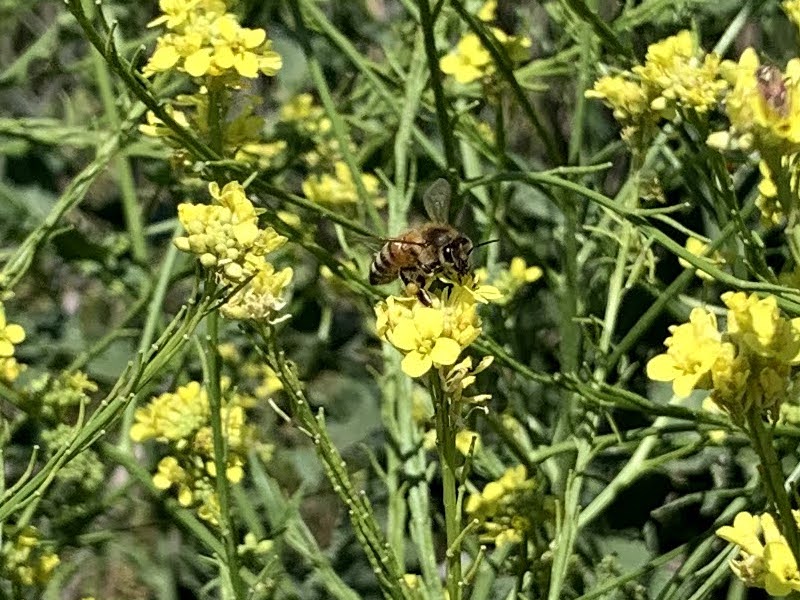Additional information:
- Overall rating for honeydew: 4/5
- Nectar: 2/3
- Pollen: 2/3
- Color: Yellow
Blooming mustard in Bay Area, California:
- February 22, 2025
- February 12, 2024
- March 4, 2023
- January5, 2022
- February 6, 2021
Mustard flowering marks the start of the swarming season.
The flowering of mustard plants is a significant period for beekeepers, especially those who focus on producing mustard honey or utilizing the mustard bloom to support their bee colonies. Mustard flowers provide bees with a rich source of nectar and pollen, which are crucial for the health and productivity of the hive. Here’s an overview of why the flowering of mustard is important for beekeeping:
- Nectar and Pollen Source: Mustard plants bloom, offering bees abundant nectar and pollen. The nectar is converted into honey, which is stored in the hive for winter consumption, while pollen is a vital protein source for bees, especially for the development of larvae.
- Honey Production: The honey produced from mustard nectar is light-colored and has a distinctive flavor. Beekeepers value this period as it enables them to harvest a unique variety of honey that can be marketed as a specialty product.
- Colony Health and Growth: The availability of ample nectar and pollen during the mustard bloom supports the growth and health of bee colonies. It helps in the expansion of the colony by supporting the queen in laying eggs and the development of new bees.
- Crop Pollination: Bees visiting mustard flowers for nectar and pollen also play a crucial role in pollinating these crops, enhancing seed production for farmers. This symbiotic relationship benefits both the agricultural and beekeeping industries.
- Seasonal Timing: The mustard flowering season often comes at a time when bees are active and the weather is favorable for foraging. This period is critical for building up hive strength before the main honey flow season or as a recovery period after winter.
- Sustainable Practice: Utilizing the flowering of mustard for beekeeping promotes sustainable agricultural practices by encouraging the cultivation of bee-friendly crops and supporting the health of pollinators.
Beekeepers often align their beekeeping practices with the flowering cycles of various plants, including mustard, to maximize honey production and ensure the health of their bees. Practices during this period include hive inspections to assess health and productivity, supplemental feeding if necessary before the bloom starts, and preparations for honey extraction following the bloom.

